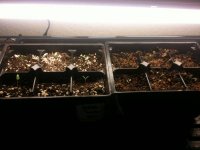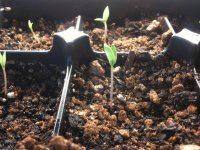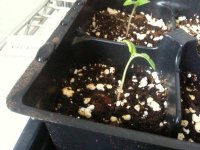S
Savoir-faire
I would also agree that composted compost wont burn cannabis... I sprouted many a bag seed last summer in pure composted manure. however... not all compost is created equal. Thermal compost.. fully composted, and cooled - WILL NOT HURT. When it comes to bagged stuff I believe what you should look for (not that companies wont lie) is nursery or greenhouse grade compost. Compost in general should settle to about 1-1-1..
However, I think that using compost to sprout seeds is taking an unnecessary risk and adding confounding variables. The seeds dont need it.. so why do it (unless u are doing some serious experimenting.. or are not using 180$ seeds.
However, I think that using compost to sprout seeds is taking an unnecessary risk and adding confounding variables. The seeds dont need it.. so why do it (unless u are doing some serious experimenting.. or are not using 180$ seeds.





